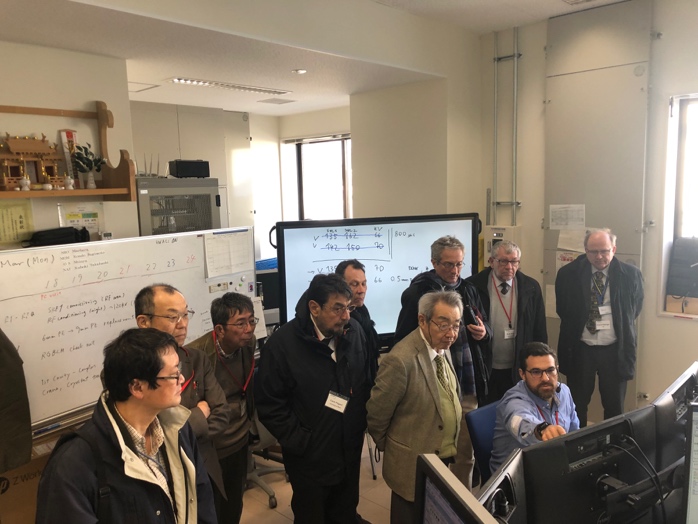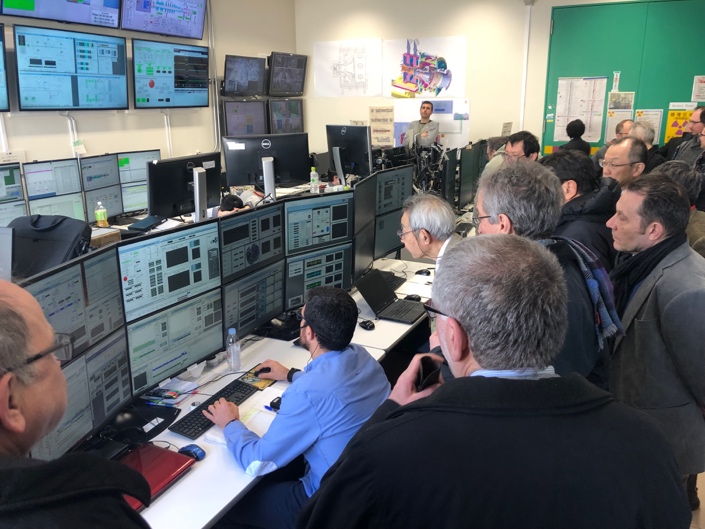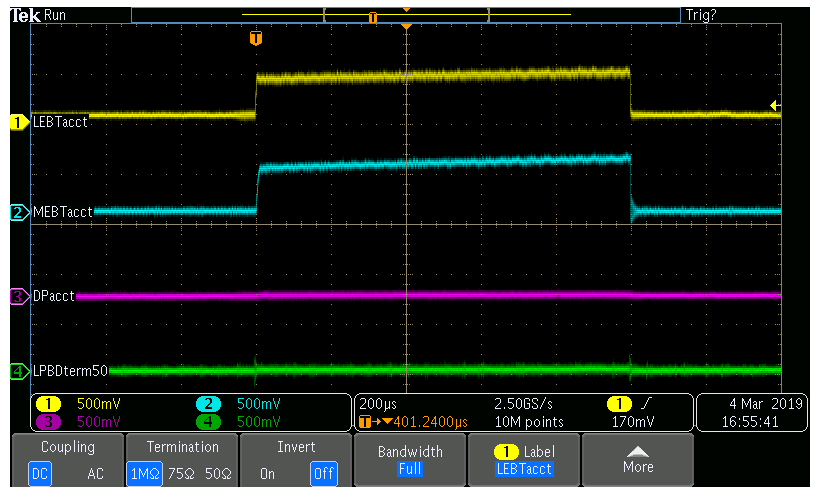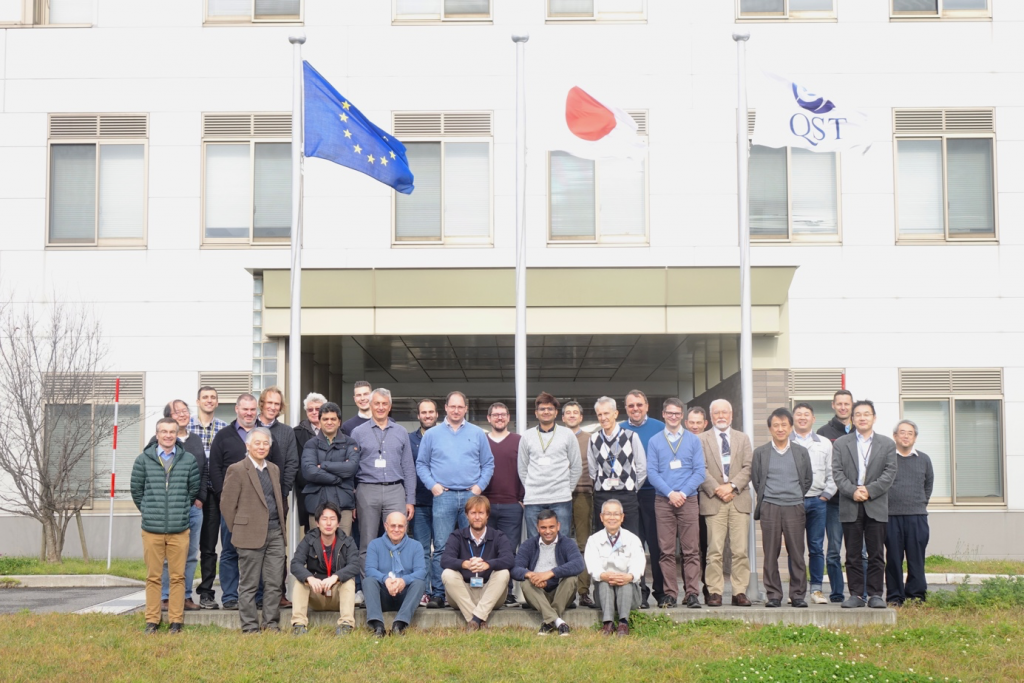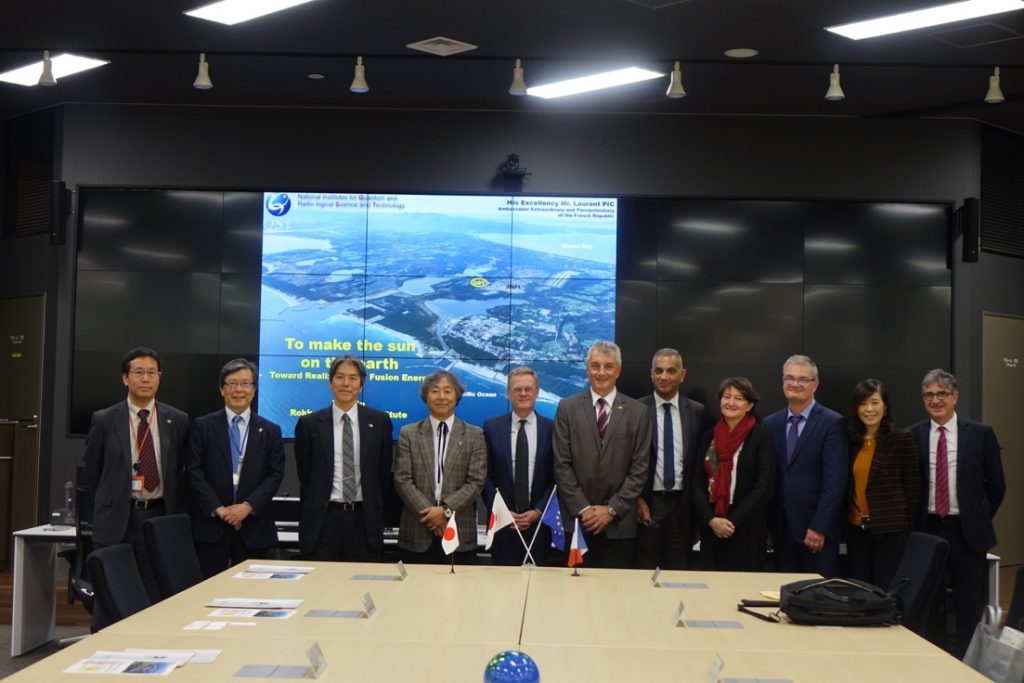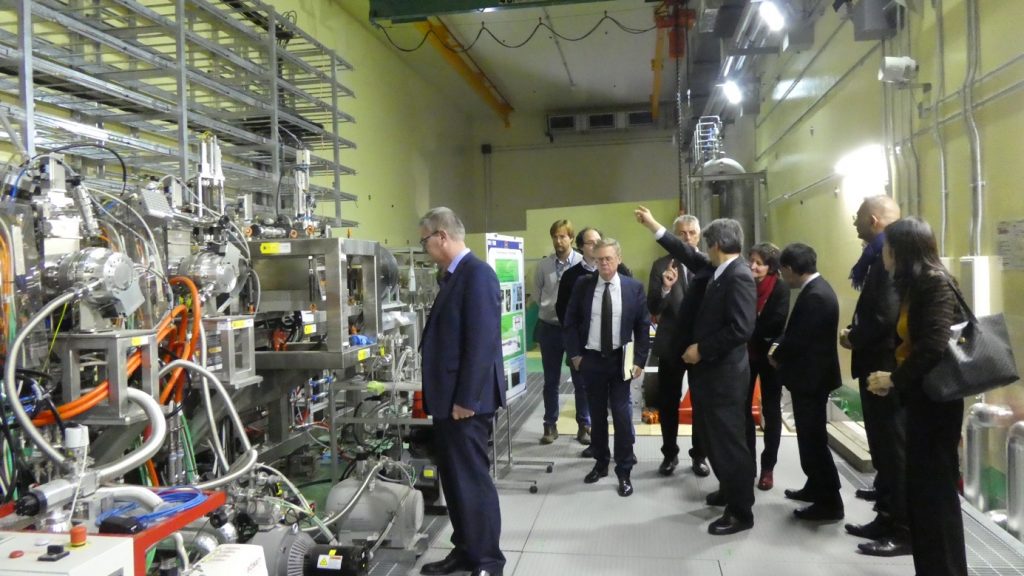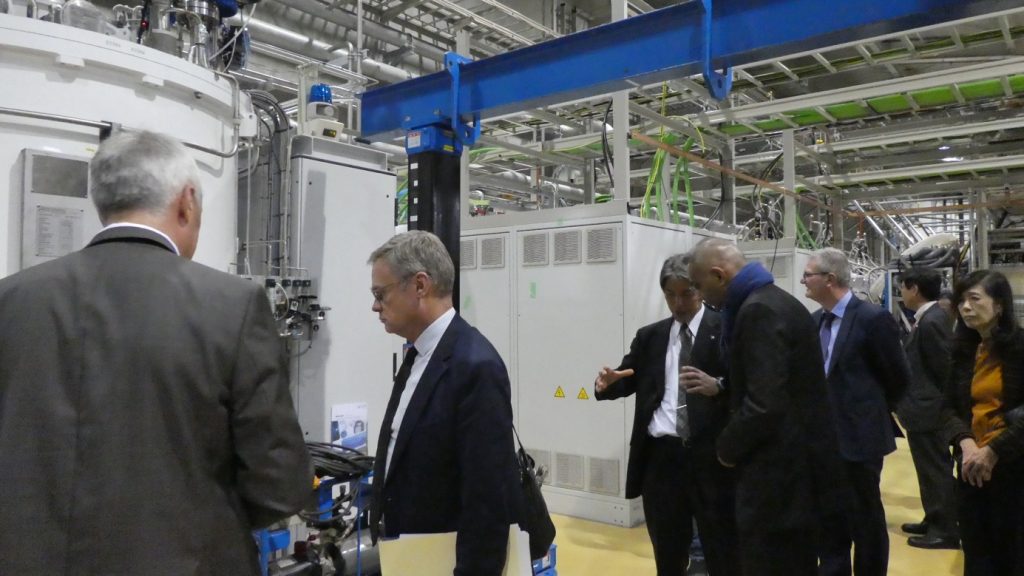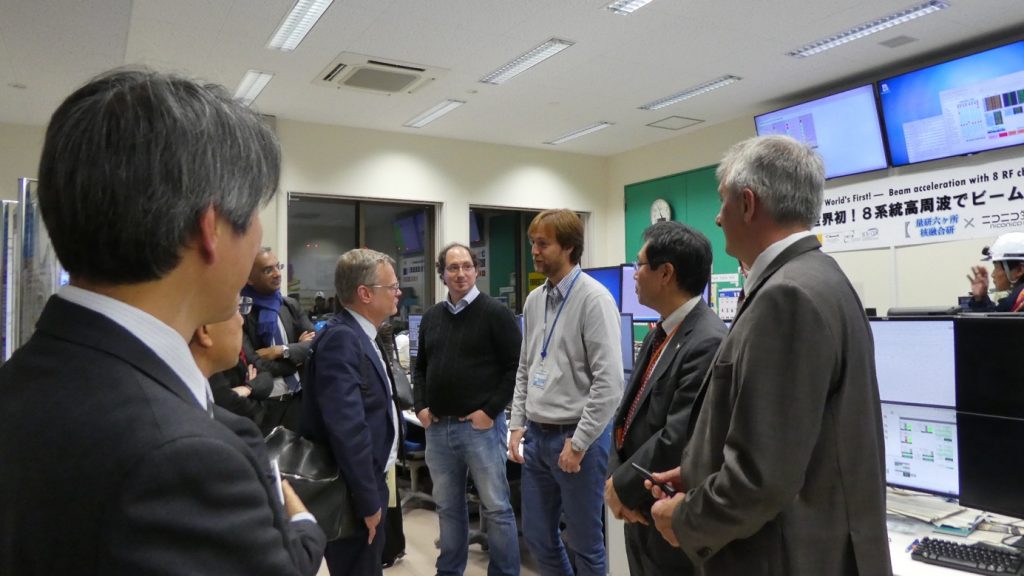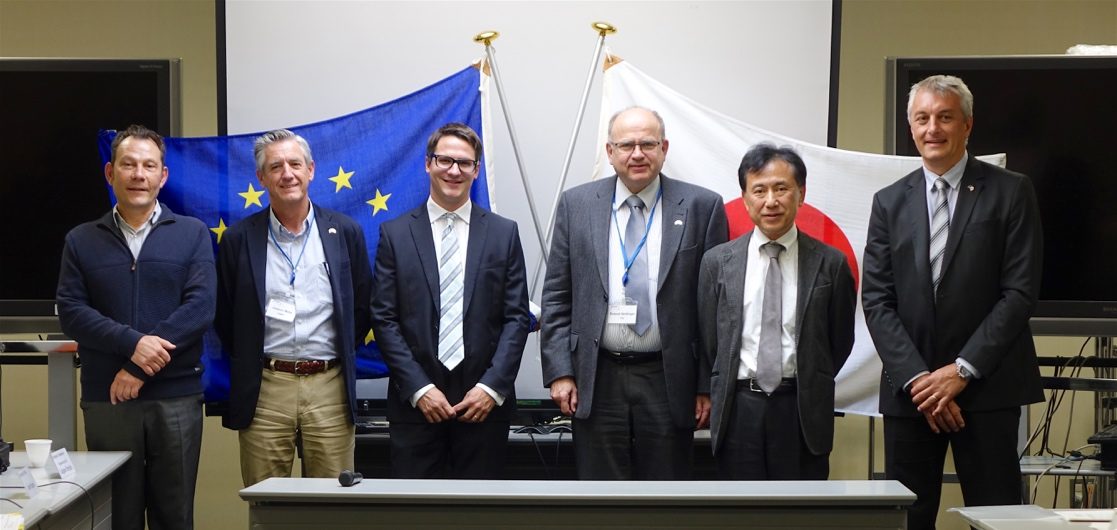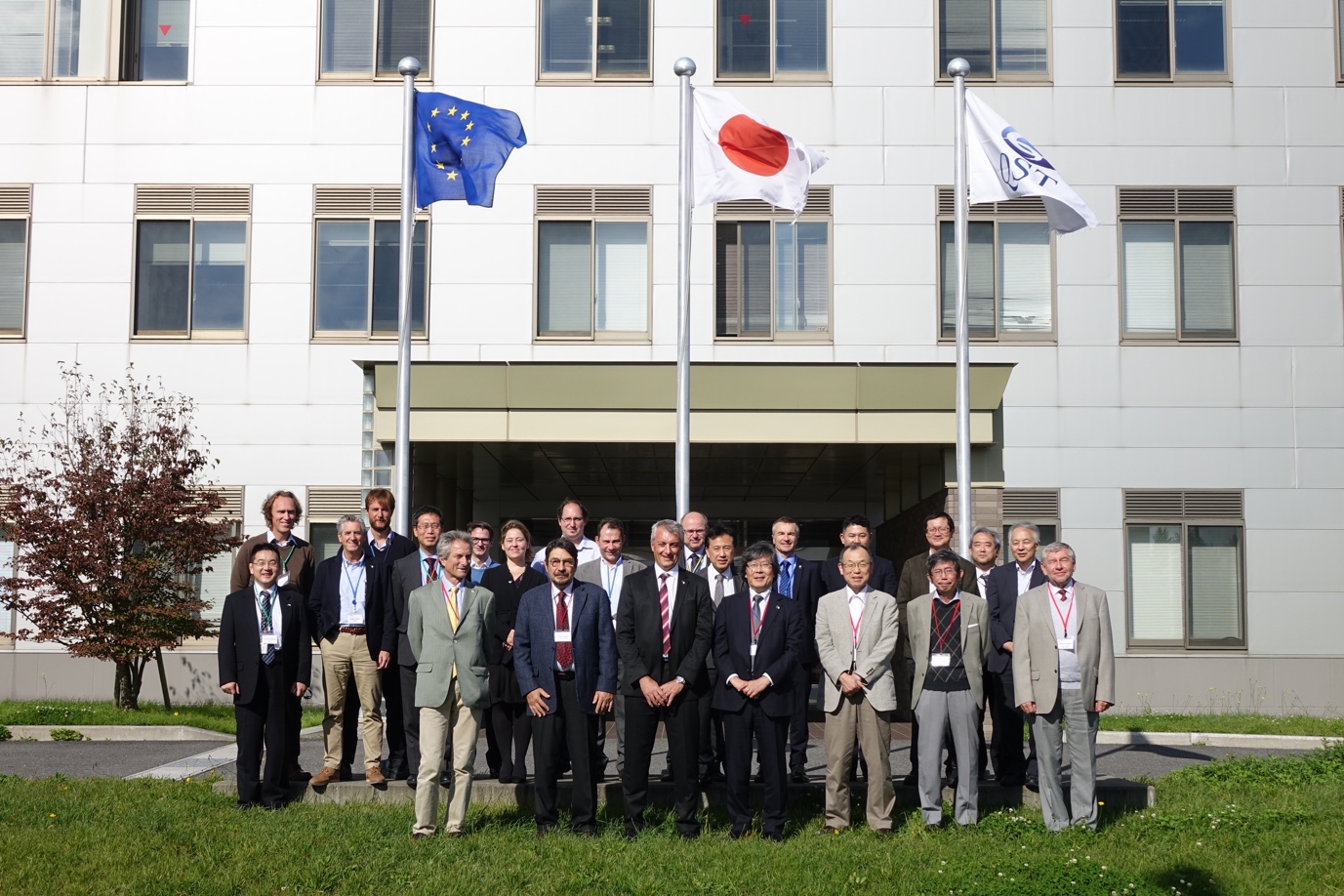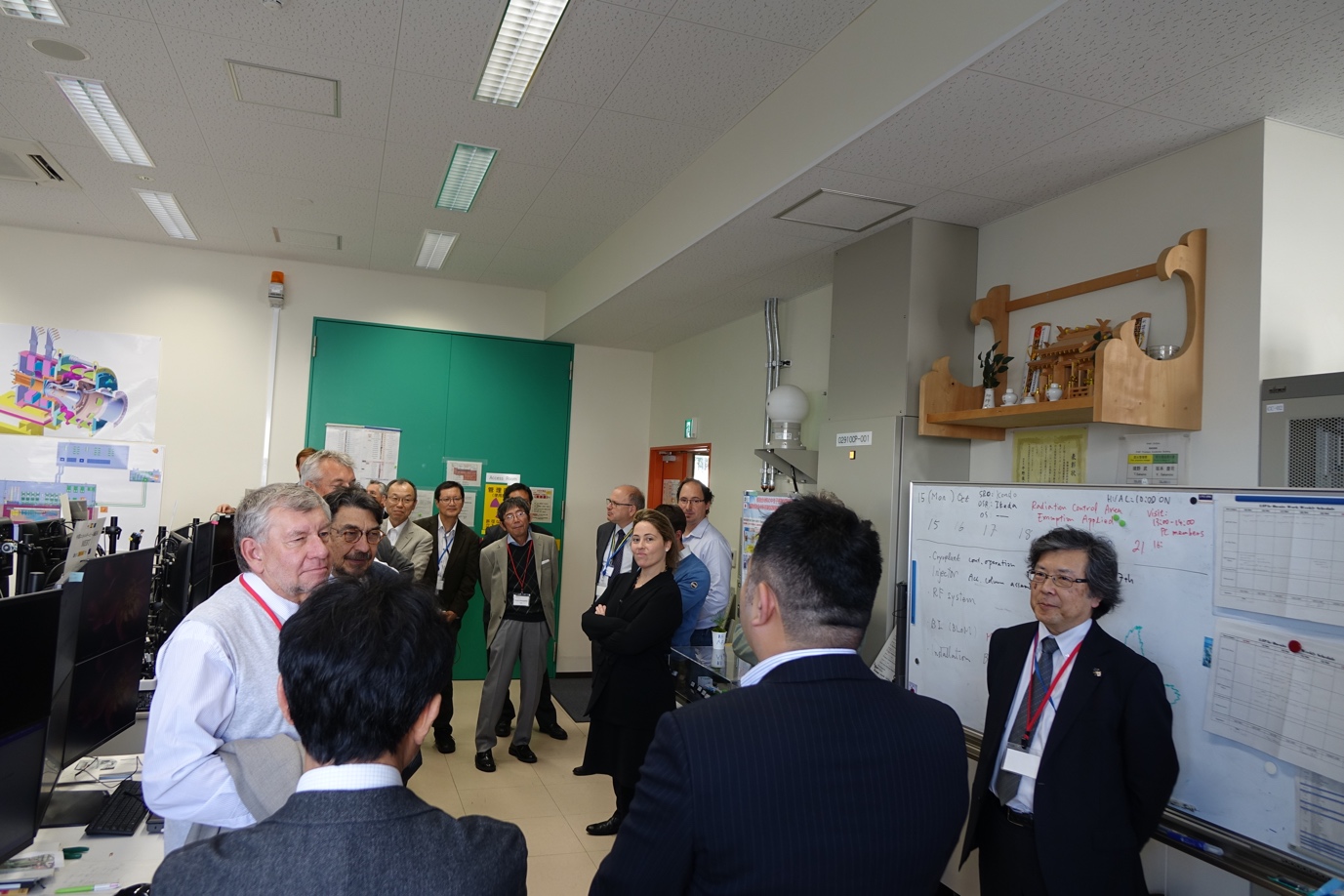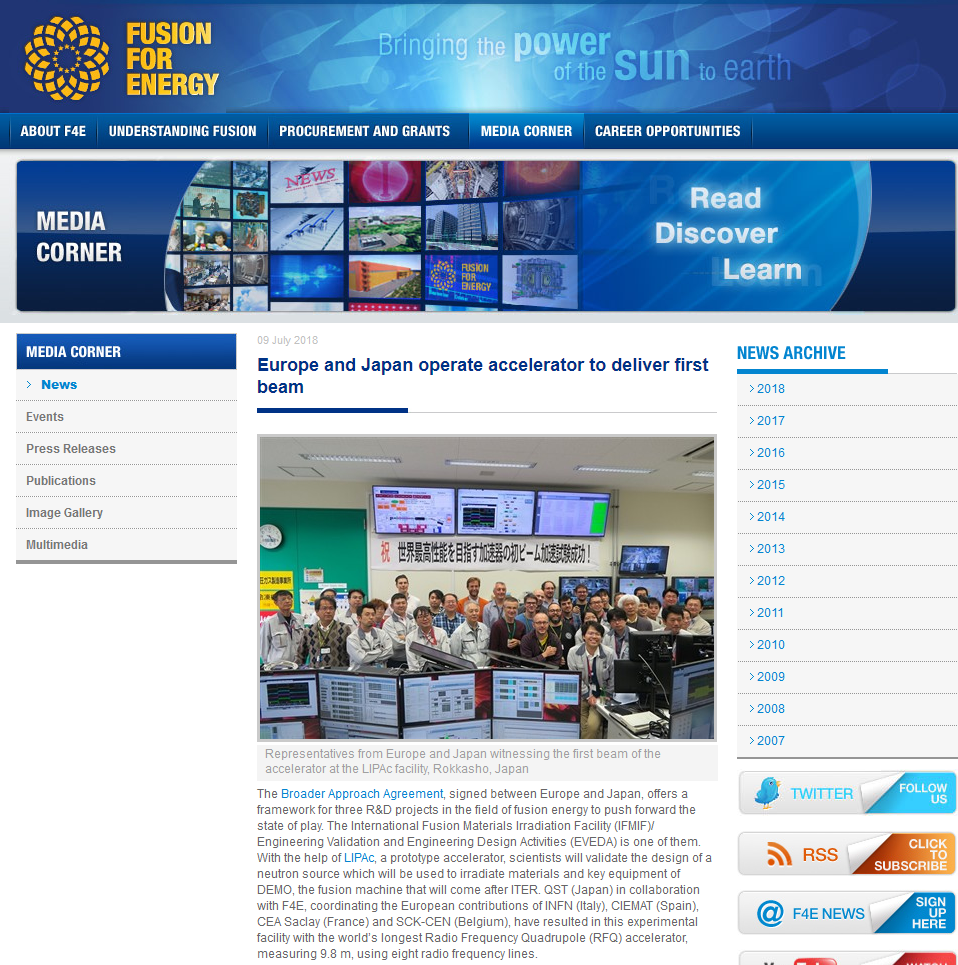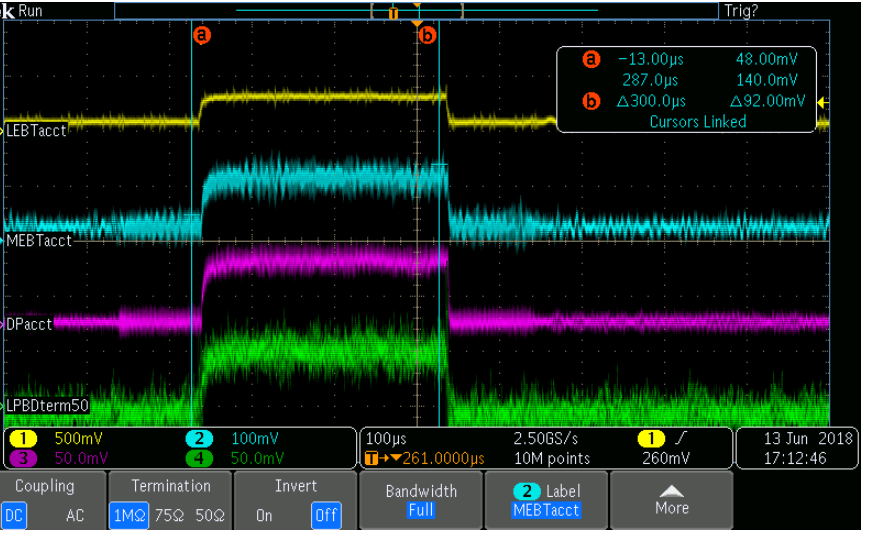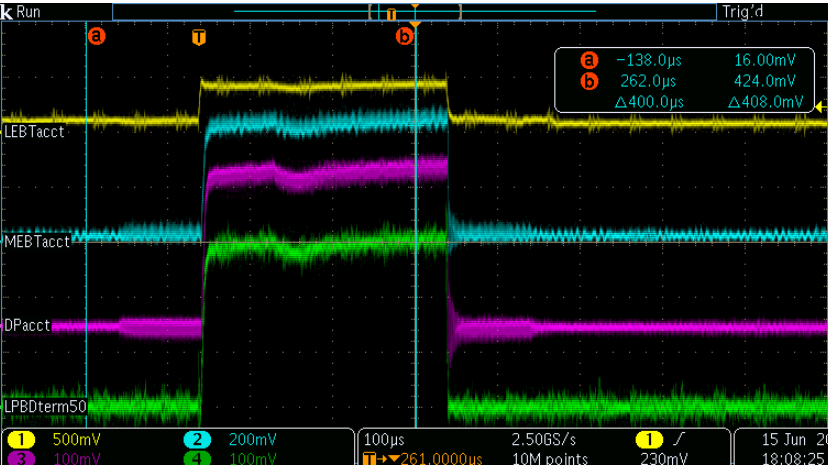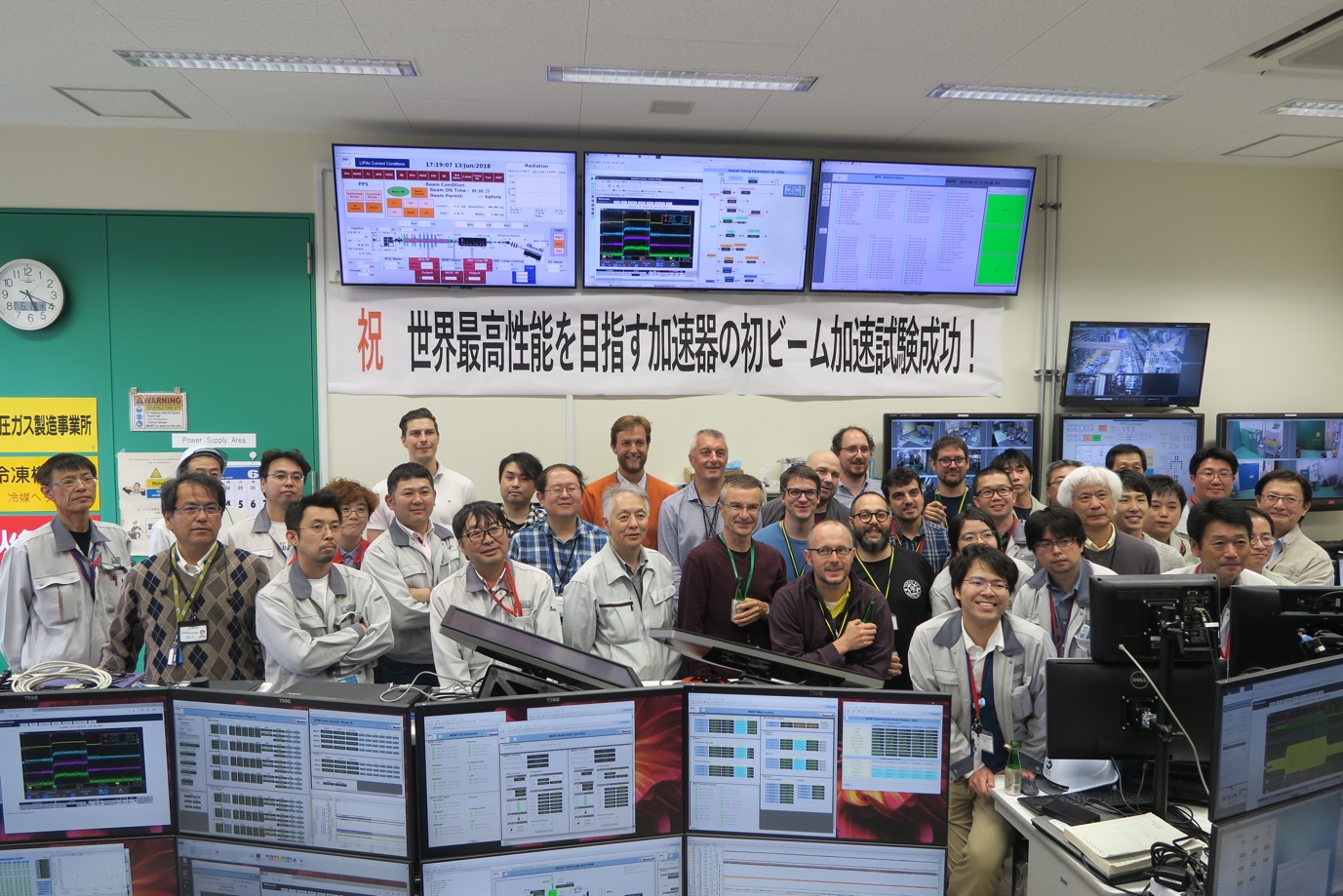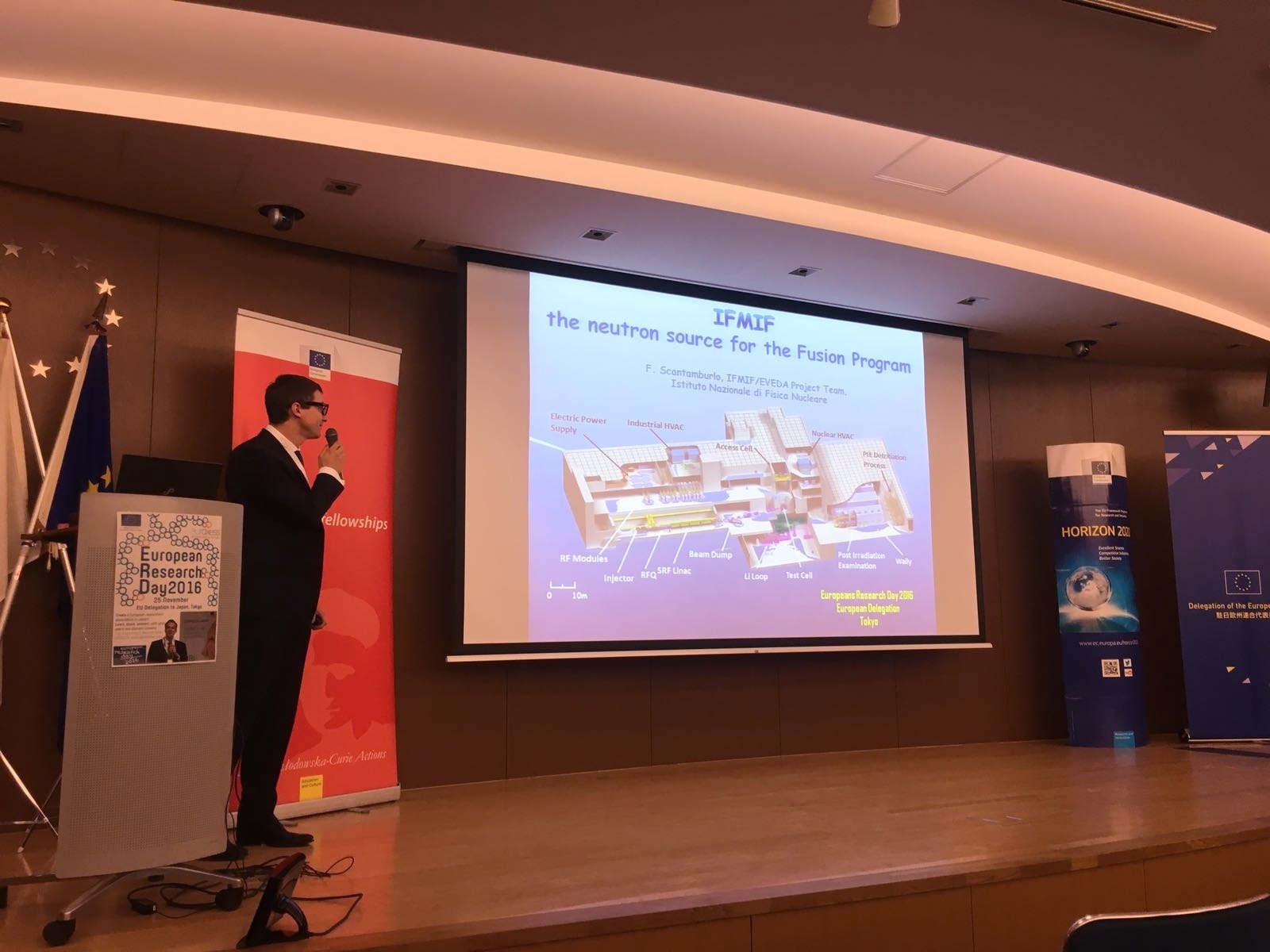18 & 19 March 2019
The 23nd Project Committee (PC#23) was held at Rokkasho IFERC Site on March 18th and 19th, during which an update of the project status was presented as well as the outlook from 2019 onward.
The main topics discussed were the progress since the last PC#22 with the achievement of the annual maintenance campaign, the completion the HEBT and Beam Dump installation in the accelerator line and the resumption of the Beam Operation with proton beam and the first deuteron injection into the RFQ. The preparatory work for the assembly of the Cryomodule in the clean room at Rokkasho was also presented.
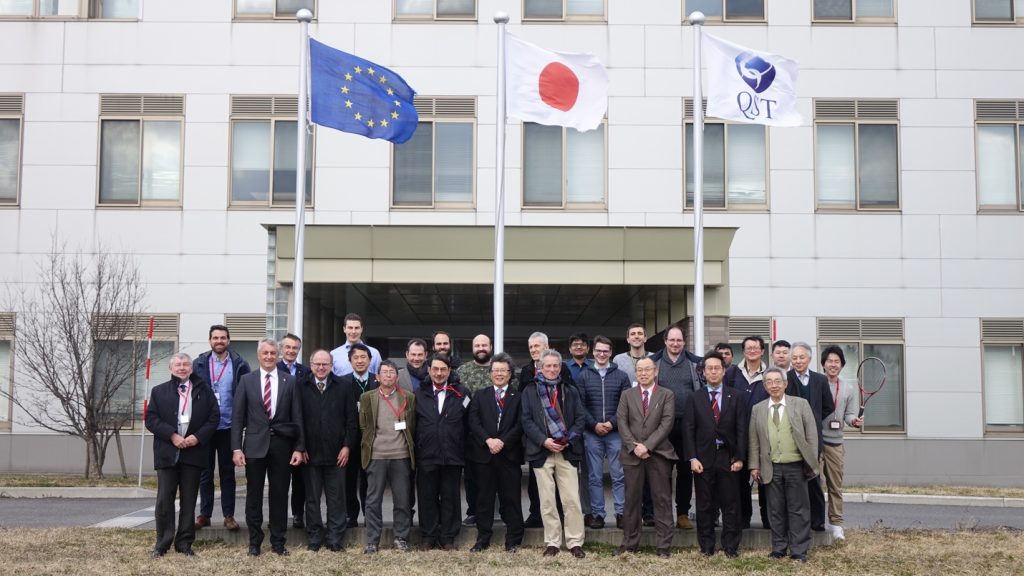
The PC members in the LIPAc Control Room participating to the beam operation



